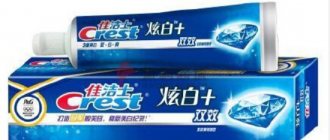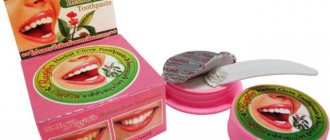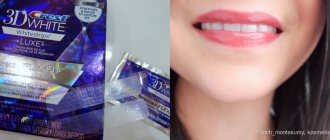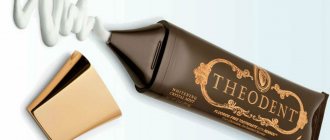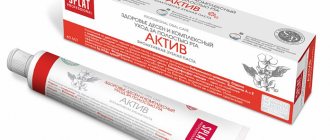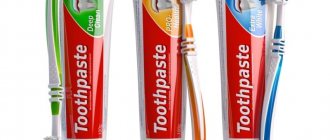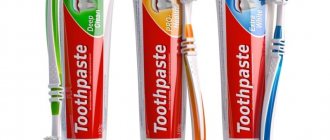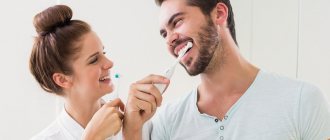A radiant smile is an important component of the image of a successful, self-confident person. She attracts the attention of colleagues, friends, and even ordinary passers-by. It's not surprising that many people want to get it. And dentists are always ready to offer many ways to fulfill this desire. Doctors and scientists are offering increasingly simpler and more convenient methods of in-office and home whitening. Today, everyone can easily choose a comfortable option that is optimal in price.
One of the most affordable so far is teeth whitening powder. Once upon a time, powders were the main means for dental hygiene, then they were replaced by pastes. This happened also because they were not suitable for daily use, as they contained coarse abrasives. These products caused a lot of harm to tooth enamel, as they violated its integrity, leaving scratches on the surface.
Let's figure out how modern whitening powders differ from their predecessors. Is it worth using them and how to use them correctly.
Purpose
It should be noted that at that time the purpose of tooth powder was not to prevent caries or treat periodontitis. At that time they did not even know such words, did not understand the reasons for their occurrence, and therefore could not yet contain these diseases with hygienic means. The main and only goal was to cleanse the teeth of plaque and tartar. Please note: in the first half of the 20th century, dentists had not yet performed such a now widespread procedure as professional oral hygiene. Neither ultrasonic nor air-abrasive (Air-Flow) treatment had yet been invented. The only way to remove conspicuous plaque is to clean it yourself.
How much does the product cost?
It is difficult to give a definite answer regarding how much tooth powder costs. Products with a simple composition and without additional additives will cost around 40-50 rubles per package. However, the assortment also includes more expensive products with additional strengthening, soothing or whitening effects - their price can vary between 200-300 rubles. The most expensive are foreign-made compounds, which are positioned to combat plaque in smokers. They can cost 500-600 rubles per package.
Starting line-up
Therefore, a good century-old tooth powder is one that has excellent abrasive properties. Hence they added to it: pumice, sand, ground bones, eggshells, mollusk shells, broken bricks and God knows what else. It must be said that toothpastes of those times were in no way behind powders in terms of abrasiveness. Moreover, to help a good cause, individual inventors added acids and alkalis of varying degrees of aggressiveness to them. Well, of course - after all, tartar softened by acid is easier to remove (alkali has not proven its worth in this regard). In general, the evolution of hygiene products has moved towards clearly expressed aggressiveness.
Streptococci
These include Streptococcus mutans, Streptococcus sanguis, Streptococcus mitis, etc. These are acid-forming bacteria, which are characterized by anaerobic fermentation. The main causative agent of caries is Str. Mutans. Its content in dental plaque is about 90% of the total number of microorganisms.
A direct relationship between Streptococcus mutans and enamel destruction has been proven. The more of these bacteria, the more intense the carious process develops. In addition, scientists have found that Str. mutans does not belong to the normal (natural) microflora of the oral cavity; the pathogen is transmitted from person to person through saliva.
Lactobacilli
During their life, bacteria produce lactic acid, but they themselves are resistant to it. The number of lactobacilli in dental plaque is small. However, the concentration of these microbes increases significantly with the formation of a carious cavity.
Harm
But in 1907, an outstanding article was published in The Dental Cosmos: Miller WD. Experiments and observations of the wasting of tooth tissue variously designated as erosion, abrasion, chemical abrasion, denudation, etc. It had about the same impact on dentists as Albert Einstein’s “On the Electrodynamics of Moving Bodies,” published two years earlier, had on physicists. Equipped with terrifying illustrations, it clearly demonstrated the monstrous abrasion of teeth (in vitro) with pastes and powders. Here's one example:
Instructions
In order for tooth powder to bring maximum effect, it is important to choose it correctly. The dentist will help with this. It is the doctor who will determine which product should be used based on the condition of the gums and enamel.
When brushing your teeth, you must follow these rules:
- The product should be used no more than 2-3 times a week.
- A wet brush does not need to be dipped into the product in the box to avoid the accumulation of dust and germs. In a separate container, dilute a little powder with water and apply the resulting mixture to the brush.
- The brush used in conjunction with the powder should have soft bristles to minimize the risk of damage to the enamel.
- The duration of dental cleaning should not exceed 3 minutes.
- When brushing your teeth, you need to make vertical or circular movements with the brush without strong pressure. It is better to start with the front teeth, slowly moving towards the molars.
- After completing the procedure, you should thoroughly rinse your mouth with water.
Quality improvement
Of course, not all dentists read this study. Consumers of the powder certainly had no idea about it. Therefore, it took decades before highly abrasive components began to be abandoned. Such useful indicators as RDA (relative dentin abrasivity) and REA (relative enamel abrasivity) were introduced. The lower they are, the less the teeth wear out. Today, manufacturers who respect their customers indicate digital RDA values on each tube. Less than 70 – low abrasiveness, 71-100 – moderate, 101-150 – high, 151-200 – very high. Here is the RDA table for some modern pastes:
| Toothpaste name | RDA | Toothpaste name | RDA |
| Toothbrush with plain water | 4 | Colgate Sensitive Max Strength | 83 |
| Regular baking soda | 7 | Aquafresh Sensitive | 91 |
| Weleda Salt Toothpaste | 15 | Sensodyne Cool Gel | 92 |
| Elmex Sensitive Plus | 30 | Rembrandt Plus | 94 |
| Sensodyne ProNamel | 34 | Sensodyne Fresh Impact | 94 |
| Arm & Hammer Dental Care | 35 | Sensodyne Original | 100 |
| Weleda Calendula Toothpaste | 45 | Sensodyne Extra Whitening | 104 |
| Weleda Ratanhia Toothpaste | 45 | Sensodyne Full Protection Whitening | 107 |
| Arm & Hammer Dental Care Sensitive | 48 | Aquafresh Whitening | 113 |
| Tom's of Maine Children Toothpaste | 57 | Lacalut White | 120 |
| Colgate Sensitive Enamel Protect | 63 | Colgate Total Whitening | 142 |
| ClinPro | 65 | Colgate Total Advanced Fresh | 160 |
| Colgate Regular | 68 | Colgate Tartar Control | 165 |
| Colgate Total | 70 | Colgate 2-in-1 Tartar Control/Whitening | 200 |
| Colgate Fresh Mint | 70 | President White Plus | 200 |
Evolution
The appearance of the first tooth powder dates back to the 2nd century BC. e.. Then the product was made from crushed shells, corals, pumice, eggshells and animal bones. Such a drug could not boast of a soft effect, and severely scratched the enamel.
Over time, the composition of the powder changed: chalk and mint or anise oil were used as the main element.
The modern product is made from precipitated calcium carbonate and various additives that strengthen the enamel and prevent periodontal disease.
Modern composition
So, coarse abrasives were disqualified from the contents of tooth powder. But what is there now? Soda, as can be seen from the table, has minimal harmful qualities. It is harmless, but its effectiveness is low. It weakly cleans plaque and does not “take away” tartar at all. Its hardness on the Mohs scale is 2.5. That's why the main ingredient in today's tooth powders is chalk (calcium carbonate). Its hardness on the Mohs scale is 3. It cleans teeth relatively gently and is more effective than soda. The rest is fragrances, flavor enhancers, dyes, etc.
What we are dealing with: what is in the product
To find out what benefits and harm powder can bring to teeth, you first need to understand what it is, what it consists of, and why this method of cleansing enamel is good and useful. Essentially, this is the same paste, only in dry form and without the addition of artificial components that enhance effectiveness. Due to the fact that the powder consists of a huge number of tiny abrasive particles, it provides high-quality cleaning from plaque. The effect becomes noticeable after 2-3 applications. Today in the assortment you can find different types of dry cleaning compositions, and all of them can differ in the following parameters:
- aromatic and flavoring additives,
- additional natural ingredients,
- the purpose of the effect is to whiten teeth, heal and strengthen hard tissues, remove yellow plaque, which is especially important for a smoker.
Tooth powder is the same paste, only in dry form and without the addition of artificial components.
The product is sold in compact round boxes with a tight-fitting lid. It should be stored in a dry place protected from moisture.
The final victory of toothpaste
Back in 1914, there were attempts to introduce fluoride into toothpaste. But only after large-scale research in the early 1950s, which proved the effectiveness of fluoride toothpastes, did active commercial production begin. The pioneer was Procter & Gamble with Crest toothpaste. Then the rest of the manufacturers picked up the baton. In addition to fluorides (to prevent caries), antiseptics and anti-inflammatory components (to fight gingivitis), and desensitizing substances (to reduce dental hyperesthesia) began to be added to the paste.
Features of the composition - how the product “works”
If at the beginning of its appearance the powder was prepared on the basis of ordinary chalk, today its composition has changed significantly and has been enriched with components that are useful and safe for enamel. Chalk remained the base, but now the powder is made using not just crushed, but chemically precipitated substance. The abrasive particles are smaller and less damaging to the enamel.
Thus, the presence of sea salt in the composition ensures remineralization of hard tissues and stimulates metabolic processes in the gums, baking soda allows you to lighten teeth and restore their natural whiteness, and extracts of medicinal herbs have a beneficial effect on oral health in general. Some manufacturers offer products based on white clay. It is believed to provide a more gentle cleansing without sacrificing effectiveness.
The presence of sea salt in the composition ensures remineralization of enamel
Where in the world is it used?
In developed countries, tooth powder is not produced. The last known global leader in the hygiene industry, Arm & Hammer, ceased sales in 2000. In Russia, tooth powder is used by 23% of the population. A recent study was conducted in India in 2022: it was found that 31% of rural residents and 15% of urban respondents use tooth powder. A strong relationship has been found between the use of tooth powder and abrasion of tooth tissue, bleeding and gum recession. This is the “beauty” you get after consuming Indian tooth powder:
What is tooth powder
A hygienic product for the oral cavity, which consists of 98-99% of chemically deposited chalk (other bases are less commonly used). The rest consists of various additives, corrective properties and additional characteristics of the powder for teeth.
The ancient Romans used crushed bones, egg shells, shells and shells of sea creatures to make it. Their substance was used as a means for pain relief and teeth whitening.
The development of dental care continued relatively uneventfully until 1000 AD, when the Persians warned others of the dangers of using overly abrasive powders that could damage teeth. They proposed creating the powder using softer materials such as burnt snail shells, dried animal parts, herbs and honey.
The founder of the modern product originated in Great Britain at the end of the 18th century. Tooth powder was first introduced to the market in the UK.
These powders may have been developed by doctors, dentists and chemists, but they also included some quite abrasive substances: brick dust, ground porcelain, pottery and cuttlefish. Bicarbonate of soda, commonly known as baking soda, was often a key ingredient. By the end of the century, borax was added for cleansing and foaming purposes.
How to brush your teeth correctly
Please note that despite the fact that most of the Indian tooth powder fan's own enamel has been erased, the black plaque has not been cleaned out everywhere. And this is on the front surface - you can imagine how much worse the situation is on the internal surfaces. This happens because brushing your teeth requires, first of all, not strength, but intelligence. Instead of violent movements, moderate but frequent movements are needed. Not horizontal, but vertical, sweeping. From the gum to the tooth: from bottom to top - on the lower jaw, from top to bottom - on the upper jaw. And, naturally, you need to brush your teeth not only on major holidays, but every day. Then the soft plaque will not yet have time to calcify and stick firmly to the enamel.
How to store dry composition
Dental experts recommend storing the powder in a dry place, away from direct heat, humidity and temperature changes. The composition is sold in special plastic packaging with a sealed lid - this is the best container, but you need to make sure that moisture and dust do not get inside.
The composition should be stored in airtight packaging
Features of use
For tooth powder, the instructions for use are a little more complicated than for toothpaste. The toothbrush should be moistened with water and the wet bristles should be dipped into a jar of powder. It is advisable to immediately collect a portion for the entire one-time cleaning. After all, when re-sampling, microorganisms will get into the powder. Bacteria, by the way, will still end up in the jar (unless you use disposable brushes), because they remain on the fibers from the previous cleaning. But in the 12 hours that have passed since the last hygiene procedure, most of the microbes have already died and do not pose any danger to the owner. The same cannot be said about other members of the family. Therefore, everyone should have a personal jar of tooth powder - otherwise there is a high risk of infecting close relatives. This is another inconvenience compared to toothpaste - the whole family can use a common tube.
Write a comment
Valeria
May 29, 2016 at 7:18 am
I never gave preference to tooth powders, probably because I didn’t know about their properties, and it’s not convenient to use them. Who would have thought that it could have a beneficial effect on sore gums? But despite the fact that the powder has many advantages, I will still use toothpaste. I can’t switch to powder, it doesn’t foam and is kind of cloying.
Lena
May 31, 2016 at 8:07 am
I’ve been using tooth powders instead of toothpastes for more than two years now and I’m happy with everything. Firstly, you don’t breathe “ice” like after these thermonuclear pastes, secondly, it whitens and cleanses your teeth perfectly (I’m a coffee lover, so this is very important), thirdly, the powders are much cheaper. The only negative is the stains on the sink. There are slightly more of them than when using paste. I really like the powders and will continue to use them.
Dmitriy
July 11, 2016 at 5:13 am
At home I always use tooth powder. I constantly remembered the lines: “...and a fluffy towel, and tooth powder...”. One day I decided to try it, first I read about the pros and cons - I found out that before, they mostly used it, but then they stopped because it spoils the enamel. It’s just that before it contained chalk, which is an abrasive substance, but since then its composition has changed significantly. The disadvantages that remain are not significant for me.
Karina
September 7, 2016 at 03:16 pm
I once decided to try brushing my teeth with tooth powder instead of toothpaste. I didn't like it, it felt terrible. It is not easy to use, has an unpleasant taste and does not foam. And I love it when your mouth feels very fresh after brushing your teeth. There was no such sensation with the powder. I know many people prefer powder to toothpaste, but it's definitely not for me.
Anna
March 21, 2022 at 11:03 pm
On the recommendation of the dentist, I alternate the use of paste and powder. I noticed that this really gives a better result than using just one thing. It took me a while to get used to the powder. After using toothpaste, it’s a little uncomfortable that the powder doesn’t foam, but it’s all a matter of time and habit. Now I enjoy using both the powder and the paste. I visit the dentist much less often.
Anna
March 29, 2022 at 10:38 pm
I remember tooth powder from childhood, I really liked it then. But with the advent of pastes, it faded into the background and was gradually stopped being used. A couple of years ago, I accidentally came across Mint powder at a pharmacy and bought it. I alternate it with toothpaste—paste for two days, powder for a day. An excellent effect and the dentist noticed that the gums are less inflamed and there is no bleeding as before.
Lisa
July 5, 2022 at 12:24 pm
I think now few people use powder to clean their teeth. This happened at least due to the fact that now there are better products, and they cost less and do not cause as much inconvenience as powder. It is very inconvenient to use the powder; over time, no one has come up with packaging that would solve a number of inconveniences. In addition, after using the powder, tooth sensitivity increases.
Reviews
Why then are there such a huge number of positive reviews about tooth powder on the Internet and among friends? It’s not surprising - there are also a lot of words of praise about homeopathy and osteopathy. Valerian, Actovegin, Linex and a hundred or two other ineffective drugs find no less devoted admirers. A person is such an amazing creature that, having convinced himself of the usefulness of a particular drug, he can actually achieve a positive effect, even if this drug is an absolute dummy. This is called the placebo effect. After persistent self-hypnosis, the transition to truly more effective therapeutic and prophylactic agents is often met with hostility. Plus, irreversible negative consequences do not occur immediately. They include, among other things, the absence of a positive impact (prevention of diseases), which few fans think about.
What damage can frequent use cause?
If the product is used incorrectly, it may cause some damage to your teeth. Of the possible negative consequences, dental experts identify the following problems:
- thinning of the enamel due to frequent use of the product or due to too intensive cleaning,
- injury to open wounds on the mucous membrane, which leads to their enlargement and exacerbation of painful sensations, increasing the risk of infection,
- the likelihood of bacteria penetrating into tissues and developing various dental ailments, which is largely due to non-compliance with storage recommendations.
With frequent use of the powder, the enamel can become thinner and become sensitive.
To avoid undesirable consequences, you need to observe moderation in everything, do not use the powder too often and follow the instructions. It is also important to follow storage rules.
Natural product
In addition to the low cost and supposedly better cleansing effect, many people are attracted to tooth powder by its environmental friendliness. Sodium lauryl sulfate, methylparaben, cocamidopropyl betaine and other horrors in toothpastes cause pronounced protest and rejection among many citizens. It’s difficult to argue with anything here - if you are a staunch opponent of “chemistry”, perhaps tooth powder is your choice. Only then be consistent - if your teeth suddenly hurt, do not treat them. After all, all modern fillings, crowns, dentures, and implants are also made of artificial materials. The natural behavior would be to remove the tooth, as our ancestors did (including those who used tooth powder a hundred years ago).
Powder or paste - pros and cons
Opinions on this matter are divided, so it is difficult to give a definite answer to the question of which is better. Some experts are confident that tooth powder is safer and more effective, while others insist that it is completely unsuitable for daily cleaning and cannot be considered a full-fledged analogue of toothpaste. So that you can draw your own conclusion, here are some comparisons between these two products:
- dry composition is a huge amount of tiny particles that contribute to better removal of plaque. Its systematic use helps maintain the natural whiteness of your smile,
- the product in the form of a dry substance does not contain artificial components and restores the normal balance in the oral cavity, prevents the destruction of hard tissues and the development of inflammatory processes due to the active activity of bacteria,
- modern paste-like products contain additional medicinal components, the action of which is aimed at eliminating and preventing a wide variety of dental problems,
- the paste is produced in a sealed convenient tube, while bacteria can settle on the powder, and it quickly becomes unusable,
- the dry product does not provide proper antimicrobial treatment, which cannot be said about the paste,
- Cleaning powder is contraindicated for use by people with sensitive enamel. Also, it should not be used every day, since in this case the abrasive particles can injure and weaken the protective layer of the teeth,
- Sometimes pastes contain sodium lauryl sulfate or triclosan1, which are very harmful. Powders contain only natural ingredients.
Pastes are intended for daily use, and powder once every 3 days
“And I’ve been adding powder to the paste for six months now. I don’t know what kind of chemical reaction is happening there, but my teeth have clearly become several shades lighter. There is no hypersensitivity, everything is as usual. Another point: I smoke and drink coffee in the morning. So in my case, the old proven remedy really saves me. An ordinary toothpaste, and even a whitening toothpaste, did not give such an effect.”
Anatoly K., Moscow, from correspondence on the forum www.32top.ru
The key difference is that toothpastes are intended for daily use. It is better to use the dry product in courses for targeted cleansing of plaque and deposits to restore the natural whiteness of the smile. It is allowed to use tooth powder once every 3 days - this frequency is optimal for maintaining the required level of hygiene. At the same time, you need to brush your teeth with regular toothpaste as usual - twice a day.
Reviews from doctors
Why then do dentists recommend tooth powder? Well, not all dentists, but only some. And these latter are a minority. Of this minority, one half has never read a single book on their specialty in their lives (yes, don’t doubt it – such copies exist). I read the second half, but these were reprints of Soviet textbooks from the 30s (and toothpaste was not produced in the USSR until 1950). And the third half, although familiar with modern concepts, understood little about them. If you ask such scholars the question: “What randomized controlled studies are you willing to refer to to confirm your recommendation?”, you may encounter the most unexpected response.
What types of dental powders are there - popular manufacturers
Before moving on to the question of how to use the product correctly, you need to familiarize yourself with the assortment presented today. Below are some really good proven products from top brands:
- Gum Gold: has an additional anti-inflammatory effect on the mucous membrane, and it contains extracts from more than a dozen different medicinal plants that prevent further growth of bacteria and help restore the natural microflora of the oral cavity. The cost of one package is about 300 rubles,
- “Mint” from “Avant”: additional components help relieve mild inflammation, carry out antibacterial treatment of surfaces, strengthen teeth, but overall the composition is standard. The cost is 50 rubles,
- “Whitening” from “Phytokosmetik”: the product does not contain dyes or flavors, is suitable for those prone to allergies, and has a pronounced whitening effect. The product costs about 70 rubles.
Recently, Japanese tooth powder for smokers from the Lion company has become very popular. The manufacturer promotes its product as a solution to the problem of nicotine plaque, but all such products have approximately the same composition with only minor differences in additional components. The conclusion suggests itself that this is just a cunning marketing ploy, and simple, and therefore cheaper, analogues will cope with the task no worse.
Conspiracy of toothpaste manufacturers
But there are also completely unique opinions from dentists. One well-known Moscow orthodontist (a competent doctor, a supporter of evidence-based medicine) posted a publication on her own website: “How dangerous is tooth powder?” With 31 links to sources of information - to give due weight to your own words. The article contains a lot of reliable information, but the conclusions are paradoxical. From the thesis about the higher abrasiveness of certain toothpastes compared to some tooth powders, the author concludes that the superiority of toothpaste over tooth powder is a myth. Formed by advertising from greedy paste manufacturers. No analysis or explanation of why evil advertisers chose for promotion a powder that was not well-known to everyone at that time, but a new, unpromoted product (and, therefore, requiring greater campaign costs) is naturally not presented. This same characteristic mistake is also popular among patients. But you only have to think a little to realize that it is much easier to advertise a cheap, low-cost, and even much more popular product to increase its selling price - and the conspiracy theory will naturally dissolve.
Clinical researches
Asept products have proven effectiveness. For example, clinical studies have proven that regular use of professional toothpaste ASEPTA GENTLE WHITENING for a month allows you to lighten tooth enamel by 1.5 tones, increases anti-caries effectiveness by 3.4 times and increases enamel remineralization by 2.6 times.
Sources:
- Report on determining/confirming the preventive properties of toothpaste “ASEPTA PLUS” GENTLE WHITENING” Author: doctor-researcher A.A. Leontyev, head Department of Preventive Dentistry, Doctor of Medical Sciences, Professor S.B. Ulitovsky First St. Petersburg State Medical University named after. acad. I.P. Pavlova, Department of Preventive Dentistry
- Clinical and laboratory assessment of the influence of domestic therapeutic and prophylactic toothpaste based on plant extracts on the condition of the oral cavity in patients with simple marginal gingivitis. Doctor of Medical Sciences, Professor Elovikova T.M.1, Candidate of Chemical Sciences, Associate Professor Ermishina E.Yu. 2, Doctor of Technical Sciences Associate Professor Belokonova N.A. 2 Department of Therapeutic Dentistry USMU1, Department of General Chemistry USMU2
- Report on the determination/confirmation of the preventive properties of personal oral hygiene products “ASEPTA PLUS” Remineralization doctor-researcher A.A. Leontyev, head Department of Preventive Dentistry, Doctor of Medical Sciences, Professor S.B. Ulitovsky First St. Petersburg State Medical University named after. acad. I.P. Pavlova, Department of Preventive Dentistry
- Clinical studies of antisensitive toothpaste “Asepta Sensitive” (A.A. Leontyev, O.V. Kalinina, S.B. Ulitovsky) A.A. LEONTIEV, dentist O.V. KALININA, dentist S.B. ULITOVSKY, Doctor of Medical Sciences, Prof. Department of Therapeutic Dentistry, St. Petersburg State Medical University named after. acad. I.P. Pavlova
- The role of anti-inflammatory rinse in the treatment of periodontal diseases (L.Yu. Orekhova, A.A. Leontyev, S.B. Ulitovsky) L.Yu. OREKHOVA, Doctor of Medical Sciences, Prof., Head of Department; A.A. LEONTIEV, dentist; S.B. ULITOVSKY, Doctor of Medical Sciences, Prof. Department of Therapeutic Dentistry of St. Petersburg State Medical University named after. acad. I. P. Pavlova
- Report on determining/confirming the preventive properties of toothpaste “ASEPTA PLUS” COFFEE and TOBACCO Author: doctor-researcher A.A. Leontyev, head Department of Preventive Dentistry, Doctor of Medical Sciences, Professor S.B. Ulitovsky. First St. Petersburg State Medical University named after. acad. I.P. Pavlova, Department of Preventive Dentistry
- Report on determining/confirming the preventive properties of commercially produced personal oral hygiene products: Asepta toothpaste used in combination with Asepta mouthwash and Asepta gum balm Head. Department of PFS Doctor of Medical Sciences Professor S.B. Ulitovsky St. Petersburg State Medical University named after Academician I.P. Pavlova. Faculty of Dentistry. Department of Preventive Dentistry.
A little about the history of the development of powder products
Many years ago, people used brushes made with badger hair and sea sponges for oral care. Later, towards the end of the 18th century, a new effective remedy was invented in Great Britain. In those days, chalk served as the basis for tooth powder, and various aromatic oils were added to it for fresh breath.
This is interesting! In fact, the first records of the use of such cleaning products date back to the 2nd century BC. Then the powder was prepared by carefully crushing corals, pumice, oyster shells, egg shells and even cattle horns.
Toothpastes have confidently replaced powder, but it is still not forgotten. Today it is more often used as a maintenance product to keep teeth clean and white. Now in production they use precipitated chalk with the addition of additional components for various purposes - fresh breath, anti-inflammatory, whitening.
Frequent mistakes and misconceptions
Before you begin enamel whitening, you need to treat your teeth for caries, relieve gum inflammation, if any, and also remove plaque - with highly abrasive pastes or in the chair of a dental hygienist. If there is plaque on the teeth, whitening procedures will not give the desired result.
You need to understand that not a single toothpaste will whiten yellowish teeth to snow-white ones in a couple of uses. To determine the color of tooth enamel, the Vita scale is used - it has 16 shades, divided into 4 groups. The Vita scale is used during whitening to determine the shade of teeth at the initial stage and observe how it changes as a result of the procedure.
Teeth whitening is not recommended for teenagers whose enamel and other tooth tissues are still developing. Whitening with peroxides should not be carried out during pregnancy and breastfeeding.
Flaws
Like any product, tooth powder has its drawbacks:
- high abrasiveness of the powder - its large particles can damage the enamel if you clean too vigorously;
- People with hypersensitivity of the enamel are not recommended to use this product;
- it is unusual to pick up a crumbly product on the brush, it is inconvenient to lower the brush into the contents of the jar;
- it is unsafe to swallow or inhale the product;
- Do not allow moisture to get into the box, this will lead to the growth of bacteria in it.
The disadvantages of this product for oral hygiene can be considered minor. You may not notice them at all if you follow the recommendations for use, tips and instructions.
Is toothpaste better for whitening?
Nowadays you rarely see a person using tooth powder. Most people prefer advertised pasta. When deciding on crown whitening, many people think about this product and think about its effectiveness.
In terms of its whitening properties, the powder is slightly superior to pastes, since the amount of abrasive substances in it is much greater . They allow you to quickly loosen hard deposits and the colored layer of the crown.
Therefore, those who are interested in getting a white smile in a short period of time are recommended to use this particular hygiene product.
In addition, before deciding on the choice of whitening agent, you should consider that most toothpastes contain preservatives and sodium lauryl sulfate , which accumulates in our body.
When giving preference to one of these products, you must remember that tooth powder cannot be used constantly. This may damage the enamel layer. The most correct option would be their complex use.
Indications and contraindications
The main contraindication to lightening tooth enamel in this way is intolerance to the components of the product .
To decide whether you can use this whitening product, you need to know what you are allergic to.
If the substance contains allergens that are dangerous to you, then it is better to refrain from this procedure.
The indication for using this product is teeth whitening. But these are not all the positive effects of using the powder.
It is worth noting! Tooth powder reduces the risk of tartar formation, reduces the sensitivity of tooth enamel and increases resistance to caries.
Recommendations for use
In order to achieve the desired result when using the product without harming your teeth, you must follow certain recommendations for its use:
- It is advisable that the product be selected for you by a dentist who will take into account the general condition of the teeth and gums.
- Avoid dipping the brush into the packaging. The rest of the mass will absorb moisture, which may change the properties of the product.
- It is recommended that before applying to the brush, dilute the powder in a separate container to a thick paste.
- To avoid damaging the enamel, it is best to use a brush with soft bristles for cleaning.
- Do not use the product for more than 10 days.
- After use, it is recommended to use a rinse, which helps both restore tooth enamel after intensive cleaning and give greater freshness to the breath, which is especially important for smokers, since powders do not cope with this very well.
The cleaning procedure with this product is practically no different from cleaning teeth with toothpaste . Just like when using it, you need to repeat the session in the morning and evening. The duration of cleansing is at least 3–4 minutes.
The whole procedure goes as follows:
- Apply powder to a moistened brush;
- Begin cleansing with gentle movements, from the front crowns. It is very important to move the brush along a vertical plane. This will significantly reduce the risk of harm to teeth;
- Clean for at least 2 minutes. Then apply a new portion to the brush and repeat all cleansing movements for 2 minutes;
- After the procedure, rinse your mouth thoroughly, washing away any remaining product.
Tooth powder can be used as a remedy. To do this, it is diluted to the state of a liquid porridge, applied using a cotton swab in the form of applications on the crowns and gums for 10 minutes, after which it is washed off with water.
If desired, this procedure can be combined with standard tooth brushing with toothpaste .
Why does enamel darken?
Typically, the enamel has a yellowish tint, close to milky white. But it should not be confused with the acquired yellowish color of teeth. Everyone's teeth darken - doctors call this discoloration, and it appears for various reasons. Darkenings are divided into two categories:
- external - appear on the surface of the tooth;
- internal - associated with the condition of dentin and pulp.
External darkening can become internal. This occurs when pigments penetrate the dentin through chips and cracks in the enamel.
External staining is caused by a hard pigment deposit that accumulates on the enamel. Most often it appears due to smoking, poor hygiene, consumption of products with natural or artificial colors (coffee, tea, red wine, sauces, etc.).
Internal staining occurs for the following reasons:
- excess fluoride in the body;
- hereditary diseases of hard dental tissues;
- caries;
- taking antibiotics and iron-containing drugs.
External darkening is removed with abrasive or enzymatic pastes, and internal darkening is removed with products containing peroxides.
Myths and real facts
Unfortunately, today many people refuse to use the product in question because they have unreliable information about the mechanics of its action. This is due to common rumors and myths:
- It is believed that abrasive particles destroy enamel, but this is not the case. Modern products are devoid of components that are too large and coarse, and damage to the protective layer of teeth can only be caused if the rules of use are not followed and the product is used too often,
- Many people mistakenly believe that the composition is significantly inferior in effectiveness to paste, but this is not entirely true. In fact, the dry product contains all the necessary components to effectively remove plaque and eliminate bacteria,
- some fear an allergic reaction. In fact, an allergy is just as likely to occur as to a modern toothpaste.
Overall, this is a truly effective and safe remedy if used correctly. But here it is worth remembering that before using it you should talk to your dentist.
How to prepare a homemade analogue at home
The composition is quite simple, so you can easily prepare the product yourself. Here is one of the proven recipes:
- You can take white clay as a base and add additional components of your choice to it, for example, dried and crushed medicinal herbs, salt, soda, etc.,
- after this, you need to thoroughly grind and mix the dry ingredients, for which you can use a mortar or, for example, a blender,
- Liquid components - oils - must be added last.
When the composition is ready, it must be poured into a dry, clean container and ensure its tightness. It is important that the product is reliably protected from moisture and dust.

